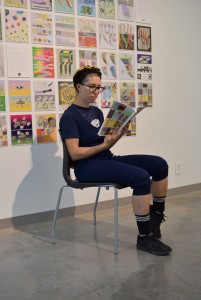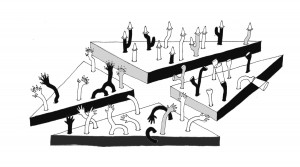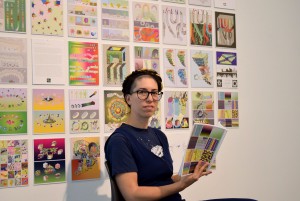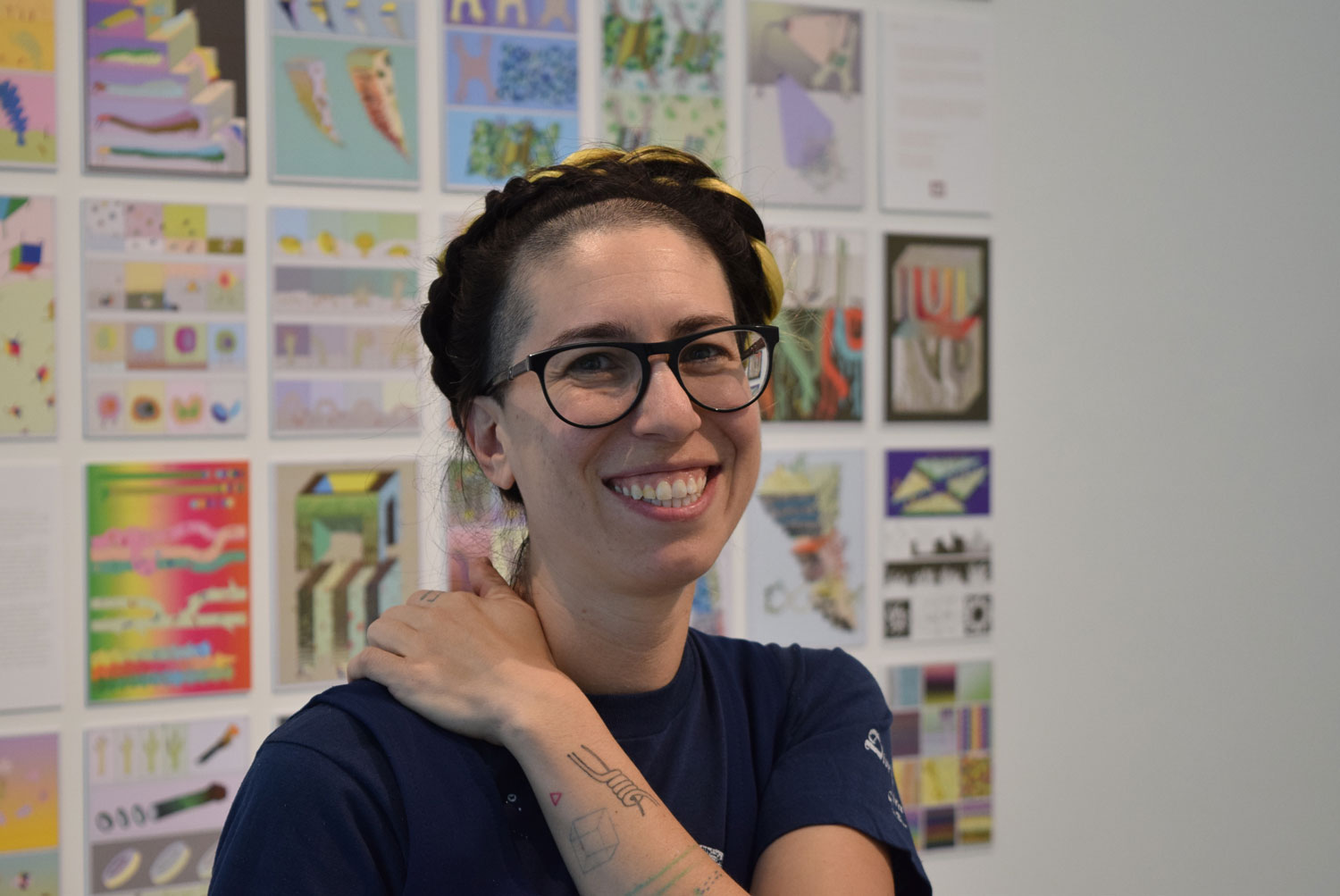Sunny Nestler is a multi-disciplinary artist, teacher, and biology enthusiast. Throughout their decades-long practice, they have produced works in a range of mediums including illustration, sculpture, installation and publishing. Hailing from Arizona, Nestler has established themself as a strong presence in Vancouver’s DIY art scene with their contributions to art book fairs, frequent gallery shows and the creation of a course at Emily Carr University that uses scientific method to inform artistic expression.
Like many extraordinary things, Nestler’s creative practice began in an ordinary way. “I started when everyone else did, like age two or three,” says Nestler, “but around the time when the school system squeezes [the art] out of you, I enrolled in drawing classes at the senior centre in my neighbourhood.” Their interest in biology was also born in childhood. Having lived in New York prior to moving to Arizona, young Nestler and their mother would try to make the dreary rain more interesting by looking at samples of it through a microscope. “I couldn’t believe it. I thought is was so cool that it was there, but I didn’t even know.”

Looking through that microscope sparked in Nestler an insatiable curiosity for the natural world. They spent their early years attempting to cultivate moss samples on their mother’s dinner plates, poring over the illustrations in their collection of field guides and exploring the patches of green between the rows of houses in their suburb. Though they may have been unsuccessful in cultivating the samples of moss, Nestler succeeded in cultivating within themself a sense of wonder. Never stopping to let it diminish, the spirit of exploration that graces every child was preserved within their art.
Nestler’s work is molecular and playful. Made of a myriad different shapes and symbols, they have created a whimsical world that is full of colour and appears to be multiplying right in front of you. Whether it’s sculpture, textiles, illustration or animation, Nestler’s collection gives the impression of looking through a microscope that contains in it a portal to another dimension. That is not to say it’s all fun and games. True to actual biological processes, Nestler’s work also emulates the strangeness of growth and decay.

Perhaps the most famous and frequently appearing microorganism in Nestler’s repertoire is the Coneworm. The Coneworm, or coneus longissimus, is a creature composed of two or more parking cones stacked on top of each other. According to Nestler’s body of work, in which they can be seen mutating in multicoloured clusters, they are a thriving species. “I’ve always had this practice of looking at the smallest possible unit of something,” says Nestler, “so, if I’m drawing a tree, I’ll draw a leaf a bunch of times to make sure I understand the structure of the leaf before I start the whole tree. I’m really interested in the repeatability of modular units, what happens when you disconnect them from their original context and then repeat them infinitely. I’m using this drawing method that is a semi-comical analog to genetic mutation, where DNA reproduces in a certain way. It’s a plus that they’re also just a really good repeatable modular unit; they’re stackable, bendable, they segment and they reference this mechanism of natural mutation, but also the synthetic world.”

There are, sadly, some things that Coneworms cannot do. One of those things is self-publishing books of art. For that, Nestler relies on their ten years of experience. In that time, Nestler has drawn, printed and bound several of their own publications. Their most recent work, Undergrowth, was on display at the Vancouver Art Book Fair after five years in the making. Nestler’s creations not only populate pages of their own design, but also those of publications such as Swampcone Magazine, the forthcoming edition of SAD Mag and Discorder.
Many would say that science and art are separate subjects and most of the time, they would be right. Nestler seeks to show us that if you look very closely, like, say, through a microscope, the two fields are very much connected, and art, as a process of endless creation and recreation, is mutation.


